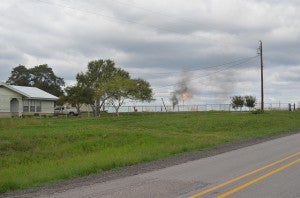 As California’s drive to wean itself from fossil fuels continues, important new challenges are emerging in its wake. Part of a broader effort to shift the state’s electric grid entirely to clean energy by 2045, for example, includes the Los Angeles Department of Water and Power’s recent announcement to retire three gas-fired power plants, while making a series of local investments to manage and balance the electric load. And with the grid getting cleaner, efforts are now getting underway to electrify as many of the other residential, commercial and industrial activities that currently depend on gas.
As California’s drive to wean itself from fossil fuels continues, important new challenges are emerging in its wake. Part of a broader effort to shift the state’s electric grid entirely to clean energy by 2045, for example, includes the Los Angeles Department of Water and Power’s recent announcement to retire three gas-fired power plants, while making a series of local investments to manage and balance the electric load. And with the grid getting cleaner, efforts are now getting underway to electrify as many of the other residential, commercial and industrial activities that currently depend on gas.
Energy Exchange
Selected tag(s): Climate
The right way for California to divest from natural gas
Studies Provide Insight on Two Overlooked Segments of Oil and Gas Industry
Scientists David Lyon and Ramón Alvarez contributed to this post

Two studies released today in the journal of Environmental Science and Technology provide new insights into methane emissions from significant sources in the oil and natural gas sector and underscore the urgency of taking action to address pollution from these sources. The studies—focusing on the gathering and processing segment and the transmission and storage segment—were led by researchers at Colorado State and Carnegie Mellon universities and Aerodyne Research, and included collaboration with EDF and companies in each of these segments.
In the gathering and processing study, researchers measured 130 gathering and processing facilities, finding emissions at gathering facilities ranging from 0.6 to 600 standard cubic feet of methane leaking per minute (scf/m). For the transmission and storage study, a different team led by CSU also collected extensive on-site and downwind measurements of methane at 45 transmission and storage sites. Site-level methane measurements ranged from 2 to 880 scf/m, with an average measurement of 70 scf/m. Of all the facilities measured for these studies, data suggests the natural gas emitted was worth about $25 million and had the 20-year climate impact equal to the emissions of 2 million passenger vehicles. Read More
Dope Deal: Wall Street Journal Falls for Methane “Facts” Cooked by Industry
 When credibility is your stock in trade, it’s important to have your facts straight. On Monday, the Wall Street Journal blew it.
When credibility is your stock in trade, it’s important to have your facts straight. On Monday, the Wall Street Journal blew it.
In an unsigned opinion piece dubbed “Meth Heads in the White House,” the paper dismisses plans expected to be announced by the Obama administration in the next few weeks that would start to tackle the huge amount of methane leaking from America’s oil & gas production facilities.
The question is a significant one, because – as the article notes in passing – methane is an extremely potent greenhouse gas (in point of fact, packing more than 80 times the warming power of carbon dioxide over a 20 year time frame). According to EPA data, oil & gas operations emit roughly 8 million metric tons of unburned methane annually, enough gas to heat nearly 6 million homes. Read More
Recruiting Tech Innovators to Find Climate Solutions
 America is in the midst of two booms: one in sensor technology and another in natural gas. Recent innovations—specifically advancements in drilling and hydraulic fracturing technologies—have dramatically increased the nation’s access to reserves of natural gas. While this influx of new technology has altered the energy industry, the resulting large-scale development has brought with it some real environmental and climate risks. Now is the time for the same ingenuity that transformed America’s energy landscape to help identify solutions to reduce the impacts caused by increasing supplies of natural gas.
America is in the midst of two booms: one in sensor technology and another in natural gas. Recent innovations—specifically advancements in drilling and hydraulic fracturing technologies—have dramatically increased the nation’s access to reserves of natural gas. While this influx of new technology has altered the energy industry, the resulting large-scale development has brought with it some real environmental and climate risks. Now is the time for the same ingenuity that transformed America’s energy landscape to help identify solutions to reduce the impacts caused by increasing supplies of natural gas.
Just this last month, two innovator programs were announced – one led by Environmental Defense Fund (EDF) and another from the U.S. Department of Energy’s Advanced Research Projects Agency-Energy (ARPA-E) – both are focused on developing new technologies capable of minimizing methane emissions from the natural gas supply chain. The programs are different but complementary and together signal there is momentum building to engage the best and brightest innovators to help address a consequential component of the climate issue. Read More
Critical Decision Expected Tomorrow in Colorado on Clean Air Rule

Day 4 of the ongoing hearings on a groundbreaking proposal to reduce air and climate pollution from oil and gas operations in Colorado saw Team EDF pushing back on claims opposition groups have made to try to weaken the proposal.
Leading companies Noble, Anadarko, Encana and DCP also put on strong cases, using their own operational data to show the proposal is cost effective. They should be lauded for their leadership, as should local governments and conservation groups that brought strong analytics to the hearings.
If the proposal is adopted without being weakened, it will eliminate more than 90,000 tons of smog-forming VOCs annually (the same amount produced by all the cars and trucks in Colorado) and more than 100,000 tons of methane, a highly potent greenhouse gas.
One Year After Superstorm Sandy, Slow But Steady Progress Toward A Common Goal
By: Rory Christian, Director of New York Smart Power, and Mary Barber, Director of Smart Power Initiatives
It was only a year ago that the most devastating storm the Northeast has ever seen slammed into the region. Hurricane Sandy pummeled the states of New York and New Jersey, destroying homes and businesses and knocking out electricity for millions of families for days, weeks and – in some cases – months.
The unprecedented situation shined a much-needed spotlight on the vulnerability of our century-old energy infrastructure, placing the issue front and center for the region’s state and local leaders, electric utility companies and regulators, particularly as climate change increases the frequency of extreme weather events. Utilities in the region have since begun to fortify flood-prone substations among other reinforcements to the power grid, but improvements that are ‘status quo’ are only part of the solution to future challenges.
Ensuring the adoption of technologies and policies that move the U.S. power grid into the 21st century, making it more resilient, flexible and smarter, can simultaneously accomplish today’s goals while preparing for future challenges – some of which may not yet be apparent. EDF is working closely with stakeholders to find innovative and pragmatic solutions to help modernize our aging energy infrastructure, an improvement that is crucial to resiliency, safety and storm recovery. Read More










